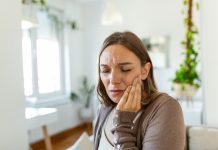
Even with COVID-19 dominating the news, the epidemic of opioid use remains a nationwide threat.
While public awareness and efforts to stop addiction and overdoses have intensified, some communities reported higher rates of opioid-related deaths in 2020 than ever before.
The extent and burden of opioid prescription drug use have gone largely uninvestigated as most studies have focused on curtailing illegal use.
In a new study from USC School of Pharmacy, researchers found that, although high-risk prescription opioid use has declined, nearly 1 in 10 adults were taking opioids that put them at increased risk from an opioid overdose in 2016.
They examined a representative, 5% sample of anonymized data drawn from individual prescription claims from 2011 though 2016.
The researchers found that more than half of high-risk prescription opioid users (51.1%) received their prescriptions from a single provider. Most (72.1%) also purchased the drugs at a single pharmacy.
Overall, the use of opioids may be tapering: 30% of people filled at least one opioid prescription in 2011 compared to 27.2% in 2016. Payments are usually being made through commercial or private insurance.
While opioid use declined by 36.2% among people ages 18 to 35, use declined by only 6.7% among those 65 years or older.
These findings indicate that many people are at risk of an opioid overdose and underscore the importance of strengthening the implementation of overdose prevention particularly naloxone access laws, and harm reduction strategies.
Many states have naloxone access laws that allow individuals to get naloxone directly from a pharmacy without a prescription from a physician.
Even so, increased awareness about the hazards of opioid use and a variety of policy interventions, such as prescription drug monitoring programs, have resulted in an overall trend of decreased prescribing, dispensing and use.
The rate of high-risk opioid use decreased nationally from 12% to 9.4% in the period we evaluated.
Not every state showed a decline, however. High-risk opioid use rose 13.7% in South Dakota—during the same time a spike in opioid overdoses occurred.
The team says the prevalence of high-risk opioid use remains troubling throughout the U.S. There are also substantial variations in high-risk opioid use by state, ranging from 5.4% in New York to 17.5% in Alaska in 2016.
Future clinical studies and policy interventions should consider targeting older adults with Medicare Part D, including those using a single pharmacy to fill their opioid prescriptions.
If you care about pain management, please read studies about this pain reliever linked to hip fracture in old people and findings of this flower may advance the treatment of chronic pain.
For more information about pain and your health, please see recent studies about 1 in 5 pharmacies blocks access to key drug to treat opioid addiction and results showing that many people are buying illegal opioids on the dark web.
The study is published in Pharmacoepidemiology and Drug Safety. One author of the study is Dima M. Qato.
Copyright © 2021 Knowridge Science Report. All rights reserved.



